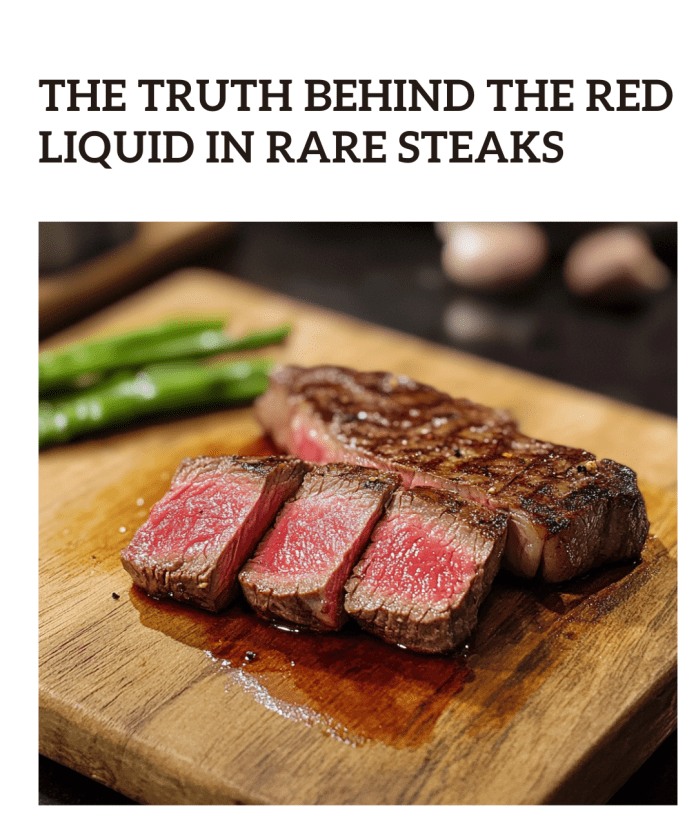ADVERTISEMENT

The Truth Behind the Red Liquid in Rare Steaks
The confusion often arises because both blood and myoglobin share a red hue due to their iron content. However, their functions differ significantly. Myoglobin’s role is confined to oxygen storage within the muscles.
Myoglobin’s Behavior When Heated
As steak cooks, myoglobin undergoes several changes:
Raw State: Myoglobin gives raw meat a deep red or purple appearance.
Rare to Medium-Rare: Heating to 120-130°F causes myoglobin to release water, seen as the characteristic red or pink juice.
Medium to Well-Done: Higher temperatures lead to iron oxidation within myoglobin, changing the color to a brownish tint and often resulting in a drier texture.
Myoglobin Content and Meat Types
Beef: High myoglobin levels contribute to its deep red raw color.
Lamb: Also red, though slightly less myoglobin than beef.
Pork: Considered red meat but lighter due to lower myoglobin levels.
Poultry: Minimal myoglobin makes chicken and turkey appear paler.
Safety and Culinary Enjoyment of Rare Steaks
The red juice in rare steaks, rich in myoglobin, is perfectly safe to consume. It indicates that the steak retains its tenderness and moisture, enhancing both its flavor and nutritional value. Myoglobin itself is a source of iron, essential for healthy oxygen transport in the blood.
Tips for Perfectly Cooked Steaks
Select the Right Cut: Opt for cuts like ribeye or sirloin to enjoy flavorful juices.
Monitor Cooking Temperatures: Achieve desired doneness with a meat thermometer; rare steaks typically reach 120-130°F.
Rest the Steak: Allow the steak to rest post-cooking to let juices redistribute, ensuring a flavorful experience.
Confidence in Steak Consumption
Understanding that the red liquid in rare steaks is myoglobin allows you to enjoy your meal without reservations. This knowledge dispels any misconceptions about its safety, letting you appreciate the rich flavors and nutrients of a well-prepared steak.